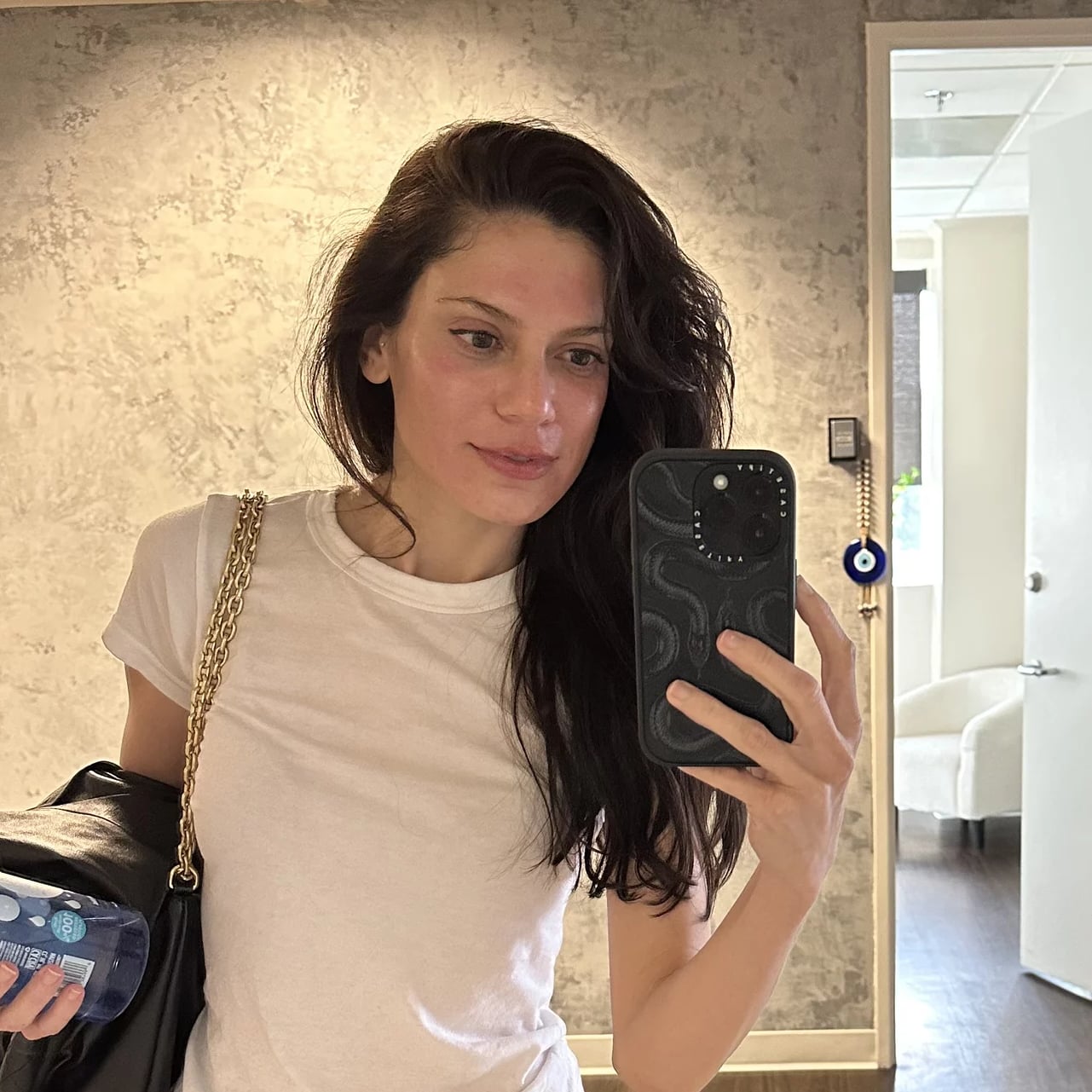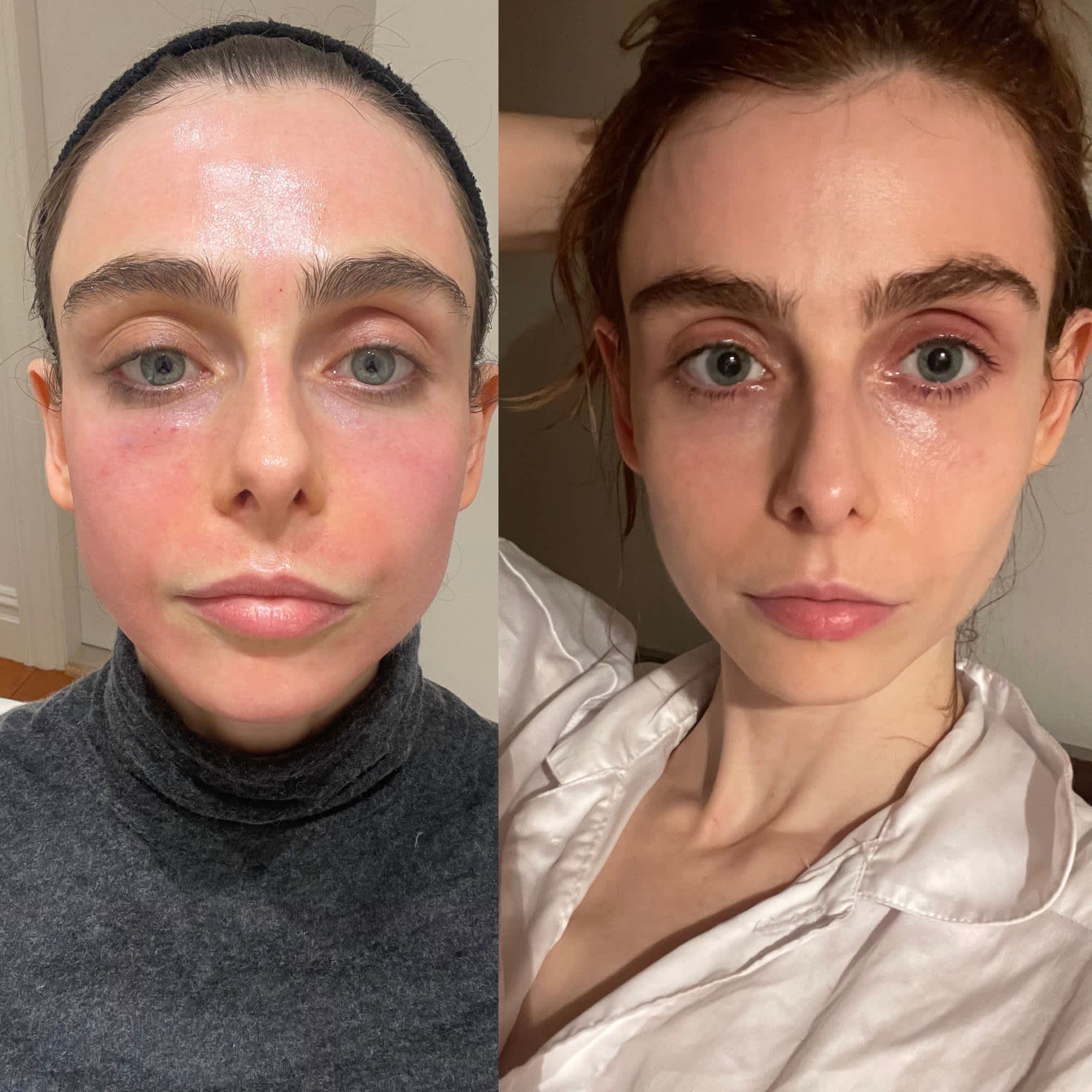
- POPSUGAR Australia
- Beauty
- What Is ProCell Microchanneling? I Tried It to Find Out
What Is ProCell Microchanneling? I Tried It to Find Out

Image Source: Courtesy of Procell
I first heard about ProCell microchanneling from my friend Maggie Davis, founder of Paxos Skincare and fellow skin-care enthusiast. Her aesthetician recommended a series of four sessions for overall volume loss and a pebbling texture on her skin. This microchanneling treatment uses even tinier needles than microneedling to infuse regenerative ingredients into the superficial layers of the skin. But because of the actives used, it is said to yield results on par with more intensive, heat-based lasers and micro-needles.
Knowing that I have melasma, a hormone-induced and heat-exacerbated form of hyperpigmentation, Davis knew that I would be interested. “There were very noticeable improvements in my areas of concern, but the most shocking and surprising improvement was with a large patch of melasma on my left cheek,” Davis told me after completing the series. “I’ve had laser treatments and tried topical treatments, but nothing improved and reduced this spot [of melasma] like ProCell.”
I then booked my appointment at the first Los Angeles-based studio to offer the treatment – the celebrity-beloved Sarah Ford Studio in Beverly Hills, California – faster than you can say “dark spot.” Read more about my experience below.
What is ProCell Microchanneling?
“ProCell is a device with little to no-downtime that can be performed year-round for both maintenance and correction,” says celebrity aesthetician Sarah Ford. “After only having it for a few months, I’ve already [seen] amazing results with rebuilding collagen, plumpness, smoothing texture and scarring, fading pigmentation, and overall prevention. It’s a huge hit.” Herself a laser technician, she adds that because it works without delivering deep heat, it is also viable for all skin tones and those with heat-aggravated conditions like melasma and acne. Because microchanneling is less ablative than its aesthetic counterparts, downtime lasts only one to three days.
Like microneedling and laser therapies, the treatment relies on controlled injury (i.e., inflammation) to cue the skin’s production of new collagen, or neocollagenesis. “Disruption of the aged proteins such as collagen promotes remodeling and replacement, which can improve skin quality and reverse some signs of aging,” says Beverly Hills-based, double board-certified plastic surgeon Ben Talei, MD. As board-certified plastic surgeon Steven Cohen, founder and owner of FACES+ in San Diego, explains, “Microchanneling is similar to microneedling, but the needles are smaller and penetrate less deeply into the skin, often dipped in ingredients like hyaluronic acid and [regenerative medicine-derived ingredients].”
ProCell specifically uses “growth factors, peptides, interleukins, and cytokines” derived from lab-synthesized Human Mesenchymal Stem Cell Conditioned Media to stimulate the stem cells in the skin. To better understand these ingredients, Dr. Cohen likens the stem cell to an “aircraft carrier” bearing cytokines and other regenerative ingredients that are delivered to cells that are dying, inflamed, or otherwise ailing. Certified aesthetic laser technician and MedSpa owner Doug McBurney says that ProCell includes pro-inflammatory cytokines to trigger the initial response, as well as anti-inflammatory cytokines to quell it and help promote healing. Dr. Talei corroborates that combining regenerative ingredients including PRP, exosomes, and nanofat PRP (PHAT) “not only helps healing occur faster but also enhances the response dramatically … for a much better overall improvement.”
My Experience With Procell Microchanneling
I arrived at Sarah Ford Studio wearing my go-to CC cream and a small breakout that I was assured could still be treated. My main treatment concerns were pigment due to melasma, some uneven skin texture, and fine lines that emerged due to being overdue for my Dysport appointment. I was relieved to be able to begin the treatment without numbing for 40 minutes first – a welcome change from typical heat-based lasers and micro-needling treatments. Plus, as Ford says, “heat [treatments] can trigger melasma, worsen pigment, and even flare cystic acne. That’s why I love that this a non-invasive, non-heat-based treatment, making it suitable for all skin types.”
After washing my face, the treatment began. Having tried many different skin devices and laser, I would consider it to be on par with microneedling – but bear in mind that microneedling is performed after numbing for up to an hour. It was less uncomfortable than Clear and Brilliant, one of the mildest fractionated lasers on the market, and significantly less painful than radiofrequency microneedling devices like Morpheus8.
Directly following the treatment, I was placed beneath an FDA-approved Celluma Panel for some LED therapy. Ford recommends using the “Aches & Pains” setting for the deepest delivery of anti-inflammatory, pro-healing red and infrared light. Then came soothing cryotherapy via the CryoTouch device, which calms inflammation, promotes healing via oxygenation of the tissue, and helps the therapeutic active ingredients penetrate even more deeply into the skin in a quick five-minute treatment. I left looking red, but was admittedly glowing.
Procell Microchanneling Aftercare
The same day of the treatment, I looked red and planned to go home and hermit, but discomfort was minimal. My aftercare regimen consisted of hydrating and healing ingredients. To help with flaking, I used Sarah Ford Gentle Enzyme Cleanser ($39USD) followed by the prebiotic- and antioxidant-rich toner, Orveda Healing Sap ($150). Then came the most healing skin-care serum in my arsenal, the
Eighth Day Regenerative Serum ($325USD) and topped by the brand’s new Eighth Day Intensive Moisturizer ($290USD) that contains the brand’s proprietary Peptide-Rich Plasma plus barrier-reparative ceramides and shea butter. To seal in all that moisture, I reached for an occlusive balm, ANFISA An-Balm Radiant Hydra-Balm (currently sold out), to help make up for my compromised skin barrier. During daytime hours, I reached for my favorite mineral sunscreen, Idsin Eryfotona Actinica SPF 50+ ($60USD).
For the next two days, my skin peeled. I first noticed substantial peeling when in the shower, and was surprised (and thrilled) by the amount – much more than I experience from even a combined laser treatment with Clear & Brilliant with Microneedling on top. Following a laser treatment or micro-needling, this is part of the typical healing process and when the resurfacing occurs. I will admit that what McBurney explained to me about the pro-inflammatory cytokines amplifying the efficacy of this non-invasive treatment (in spite of its less-aggressive delivery) felt true; I was experiencing peeling on par with a much more aggressive treatment than what I had undergone. Plus, I knew the cell turnover and creation of new collagen would continue after the peeling stopped.
By day three, I was back to normal aside from the glow of a freshly resurfaced complexion.
Is ProCell Worth It?
As someone that tries many different skin-care treatments, I loved ProCell and definitely want to complete a full series of three treatments. I found perks from beginning to end, such as the fact that you do not need to wait through forty minutes to an hour of numbing prior to the treatment, and that it is less uncomfortable than the treatments I have been opting for for the last six months (like AviClear and radio frequency microneedling). Peeling concluded after three days and the resurfacing that took place was definitely on par with a much more aggressive type of laser or treatment. I had a glow and cannot wait to see how the benefits continue with time.


